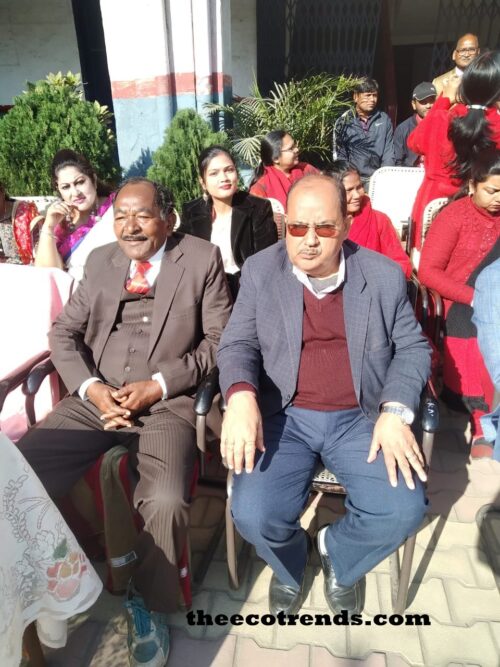The Social Environment
Family is a universal Organisaion. The structure and form of a family varies from society to society. Variations in the forms of family are created by culture, social system, social values, and conditions of life. It is difficult to classify family on any one of these bases. This is the reason why sociologists classify family on many different bases.
Family structure has been classified variously on the bases of marriage, residence, and size. These family types are introduced below-
A. Types of family on the basis of marriage
Family, on the basis of marriage has been classified as – Polygynous, Monogynous, and Polyandrous. A family consisting of many women related to one man with or without one or more children is called as Polygynous. On the other hand, a family consisting of one man, one woman with or without one or more children is called as a Monogynous family. In a Polyandrous family a single woman may live with many men in sexual relationship.
B. Types of family on the basis of residence
Family on the basis of residence or habitation can be classified into five types –Patrilocal, Matrilocal, Neo-local, Bilocal, and Avuncu local. The details are mentioned below –
(i).Patrilocal Family- In this type of family the wife goes and lives in the family of her husband, after marriage. As such, the family of this kind is based on patrilocal residence. This family is also known as Virilocal family.
(ii). Matrilocal Family-Matrilocal family is just opposite of the Patrilocal family. In this family, after marriage the husband goes and lives in the house of his wife. Hence, he occupies a secondary position. This type of family is also known as Uxorilocal Family.
(iii) Neo-local Family-When a married couple after marriage resides in a new place and establishes a family independent of their parents or of their relatives; such type of family is known as neo-local family.
(iv).Bilocal Family-In some societies after marriage the married couples change their residence, i.e. sometimes the wife joins her husband at his residence and vice versa. This type of family is known as bilocal family.
(v) Avuncu local family–When the couple goes to live in maternal uncle’s house after marriage, this type of family is known as Avuncu-local family.
C. Types of family on the basis of size
On the basis of size and structure family may be classified into the following types –
- Nuclear family-
Nuclear family consists of a husband, wife and their unmarried children. This type of family is also known as elementary or primary or single or individualistic family. The size of nuclear family is small. It is an autonomous unit and is the most ideal form of family in the modern industrial urban civilized society.
Murdock divides the nuclear family into two types- (a) The Family of Orientation, and (b) The Family of Procreation.

The family of orientations is family in which the individual is born and reared. It consists of father, mother, brothers and sisters. The family of procreation is the result of marriage. In other words, after marriage the individual forms the family of procreation. It consists of husband, wife and children.
Nuclear family has a number of advantages and disadvantages. These are listed below-
I. Advantages or merits of a Nuclear Family
(i). Privacy of individuals – Privacy of a couple is maintained in this type of family. In other types, it is hard to maintain. It is in this type of family that people can adopt their own lifestyle and do whatever they wish. There is no one else to set any boundary for the family members to follow under strict rules.
(ii). Financial stability – Financial stability is one of the strongest advantage in a nuclear family. Since expenses in this type of family remain limited, the nuclear family feels financially strong.
(iii). Freedom – In a nuclear family, these are parents who set rules for children on the basis of values and morals they know about. There are no elders who set rules on the basis of their experiences, traditions etc. Hence, parents remain free to frame rules for the family on the basis of their own likes and dislikes. Thus, there is much freedom for members in this type of family.
(iv). Easy movements– A nuclear family has to face less problems while shifting from a house or going elsewhere. It is in this type of family that one can manage his affairs without disturbing the lives of other people. Thus, easy movement is one of the major advantages of a nuclear family.
(v). Minimum stress and discomfort – A nuclear family do not cause stress and discomfort as members remain free in many ways. They do not get any additional reason for stress and difficulty except those that are generated by them.
II. Disadvantages or drawbacks of a nuclear family
(i). A nuclear family is too isolated and unconnected to elicit support or assistance during need or crisis.
(ii).The limited size of a nuclear family poses practical problems for child rearing and care. This condition specially emerges when parents work outside.
(iii).In this type of family children remain deprived of a wider social world, emotional bonding, love and affection that a joint family provides.
(iv). Old parents are left in the village or old age homes without personal care.
(v). Children of nuclear families usually lack the feeling of cooperation, sympathy, love, discipline etc. as they remain unconnected to customs, traditions, culture etc. of an ideal family.
(vi). There is probability of loss of the original traditions, and culture through a nuclear family.
(vii). since children of a nuclear family do not remain socially active, they become selfish and self centered.
(vii). Children of a nuclear family are prone to develop a feeling of loneliness and insecurity, and these feelings go a long way in developing complexes in them.
(2) Conjugal Family
When some relations are added to the nuclear family they said nuclear family is known as conjugal family. Sometimes this family is also called as mixed family. This type of family basically exhibits the characteristics of nuclear family.
(3) Extended Family
An extended family is the collection of a number of nuclear families. This complex family is organized on blood relationship. It is therefore known as consanguineous family. The members of the extended family belong to several generations. Thus, the extended family is composed of father, mother, their sons, the son’s wife, grand children, uncles, aunts, their children, grand children, grand father, and grandmother and so on. So the size of an extended family is very large. The extended families are found in agrarian economy and in rural community.
Most of the sociologists treat extended family as synonymous to joint family. To them, joint family in addition to the above characteristics; possess the features like common ancestors, common residence, common property, common kitchen, rule of the head etc. An extended family can be extended horizontally to brothers and sisters or cousins. It can be extended vertically to include a grandparent or more, with three or even four generations.
Key Words : family structures, India, nuclear family, extended family, marriage




